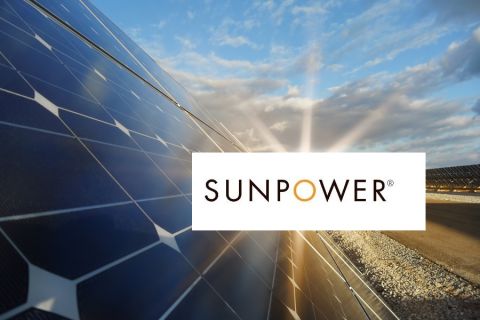ArcLight Capital Partners LLC, based in Boston, has a 10-plus year track record of investing in energy, raising some $10 billion across five funds since 2002. Historically, says co-founder Dan Revers, its portfolio has been comprised mainly of hard asset investments made opportunistically across the entire value chain—from “the wellhead to the wall socket”—with roughly a 2:1 weighting in power as compared to the midstream sector.
But it is the midstream sector that is set to capture the predominant weighting in ArcLight’s latest fund, which closed with $3.3 billion in assets in late 2011 and is about half invested. Upstream investments are expected to comprise a mid-teens percent of assets, but the lion’s share of the fund will be made up of midstream investments with a 2:1 margin in its favor over power.
“For the last several years, we’ve seen midstream as a really interesting opportunity,” Revers tells Midstream Business. “It’s been an incredibly dynamic segment in which to deploy capital.”
Offshore and abroad
ArcLight’s view of midstream opportunities is not confined to onshore gathering and processing activities. While ArcLight is active in multiple domestic basins, it is also investing in an offshore infrastructure project in the Gulf of Mexico, crossborder facilities to serve growing Mexican demand for natural gas, as well as a various international ventures.
ArcLight has invested in midstream assets since the firm was founded in 2001 when unregulated midstream assets first became available. “Our first midstream deal was a high deliverability gas storage facility located in Lodi, California. It was an unregulated asset where you could see your way to making private equity returns by executing development and commercialization activities,” recalls Revers. “We also successfully invested in Southern Pines, a salt dome gas storage project in Mississippi with a similar strategy.”
Revers emphasizes the importance of identifying market shifts early in a sector as diverse as midstream.
“Because midstream is such a diversified, dynamic market, we try to get ahead of trends, because that’s where the value is. Once the risk/reward proposition is broadly understood, the investments tend to be less attractive from a private equity point of view,” he says.
In 2006, as shale gas was gaining momentum, ArcLight made its entry into the Arkoma basin through a pipeline venture serving the Woodford shale. In the Eagle Ford, in 2007, ArcLight purchased a 50% interest in NET Midstream, which operates six intrastate gas pipelines in Texas, including three pipeline systems in the Eagle Ford.
Agua Dulce hub
Last year, NET Midstream struck a deal to build a 124-mile, 42-inch diameter gas pipeline system from the Agua Dulce hub in South Texas to a delivery point on the U.S.-Mexico border. The pipeline project will be anchored by a long-term firm gas transportation agreement for up to 2.1 billion cubic feet (Bcf) per day with a wholly owned subsidiary of Pemex, the Mexican state-owned oil company. The project represents one of the largest gas export projects in the U.S., a direct consequence of low-cost gas resulting from the shale revolution.
Revers points to the advantages in transactions that are “created from whole cloth.” With wider availability of private equity capital in the market, being able “to create your own deal flow” often distinguishes a traditional private equity sponsor, such as ArcLight, from other sources—larger infrastructure funds, for example—that tend to bid at auction for largely predictable, lower risk, lower return assets, he says.
As an example of the former type of transaction, Revers points to announced plans for CenterPoint Energy, OGE Energy Corp. and ArcLight to combine assets—valued at nearly $11 billion—into a leading midstream partnership that they will then take public via a master limited partnership (MLP). The MLP will hold the interstate pipeline and field services of CenterPoint and the midstream business of Enogex LLC. Enogex is 50%-owned by ArcLight and has assets in Oklahoma and Texas.
Also noteworthy—and more striking for being offshore— is ArcLight’s Gulf of Mexico infrastructure venture, Toga Offshore LLC. The project called for a $430 million commitment from ArcLight to acquire a majority stake in, as well as provide construction financing for, a floating production system (FPS) and associated export lines needed to develop deepwater discoveries made by Covington, Louisiana-based LLOG Exploration Co. and its working interest partners operating in the Mississippi Canyon area offshore Louisiana.
Jake Erhard, the ArcLight partner who oversees the commitment made by the firm in December 2012, underscores how novel it is for offshore E&P companies to access the type of funding provided by Toga Offshore, also known as the Delta House project.
“It’s a fairly small universe of people doing these types of transactions,” Erhard tells Midstream Business. Given a history of deepwater development being dominated by the majors, instances of third-party involvement in similar projects are few and far between. “We tried to develop a template or business model for this part of the world,” says Erhard.
ArcLight principal Lucius Taylor, who is also working on the project, adds: “We’ve tried to turn the existing model on its head and help provide financing for independent operators, like LLOG, who are increasingly on the cutting edge of deepwater exploration and development. I do“n’t think there is another structure like this in the market.”
Talent spurs confidence
"Our confidence in doing the transaction was largely a function of the relationship developed with LLOG. It’s a world-class organization with extremely talented people. We felt we were partnering with LLOG, with a good sense of alignment of objectives, and that was a key driver for us,” says Erhard. In addition, Mississippi Canyon is viewed as “one of the most prolific regions within one of the largest oil and gas basins in the world.”
The Delta House timetable calls for first production in the spring of 2015, or a little less than 30 months after the December 2012 final investment decision.
Although the base case for Delta House assumed production from four wells at startup, there have been five successful wells drilled as of late last year, and seven wells are now expected to flow when the FPS is placed in production. Eventually, as many as 16 wells from LLOG fields are expected to flow to the facility. Estimates of 3P reserves (proved, probable and possible) have now doubled as compared to the base estimate.
The first five wells have been “very, very successful wells,” says Erhard, and estimated reserves have “increased materially” over the course of the 2013 drilling program. The three principal fields being tied back to Delta House have large reservoirs with connectivity greater than was initially predicted.
While ArcLight’s $430 million equity commitment gives it a majority ownership in Delta House, LLOG and its working interest partners, who collectively own the remaining 49% and are the anchor producer counterparties to Delta House, will be able to share in any improvement in the economics at Delta House. The tariff structure is designed to produce a rapid return of capital, in which the E&P co-owners share through their equity investment and successively lower tariffs kick in as cumulative production targets are met by the anchor producer group using the FPS.
“The producers benefit as they achieve certain production thresholds,” says Taylor. “The producer payments step down precipitously to a point where it is a very good tariff rate for the producers.” In addition, if new third-party production is dedicated to the FPS, the anchor producer counterparties are able to gain credits against their tariffs. Also, if ArcLight is successful in arranging bank financing against the FPS—as it is currently pursuing—the anchor producer group will also benefit from adjustments to lower fees.
Striking a balance
Erhard says that these terms were designed to strike a balance resulting in “a good sharing of upside in exchange for some downside protection.” ArcLight’s downside exposure is limited, for example, by the producer group having to shoulder any possible cost overruns on the FPS, as well as bearing 100% of drilling, completion and subsea tie-in costs. “We were happy to give away some of those upside components. It’s always nice to have some of the downside covered.”
So is risk-sharing the key factor? And in the offshore, are risks higher, or not as high as generally perceived? And what about returns?
“If you look at the economics of some of the deepwater discoveries, they are as compelling, if not more compelling, than the economics in the heart of the onshore resource plays,” says Erhard. “Yes, it’s offshore, and there’s a higher ticket cost to play; and there are risks that are unique to the offshore. But the ability to allocate risk to other stakeholders in a project is much more readily accomplished in the offshore environment.”
“On top of that, the nature of the players in exploration and development in the offshore world are increasingly smaller independents and private equity-backed players. The big, vertically integrated super-majors are still out there, but they aren’t the only guys in town. And so there’s more and more opportunity for someone to come in on an independent basis and provide an infrastructure solution.”
The ArcLight team emphasizes the need to approach these projects with “eyes wide open” to risk. But setting aside factors beyond their control, how do they manage the tradeoff of risk and return?
“We target assets and structure deals with a heavy emphasis on risk mitigation, but with the ultimate goal of earning returns in excess of what one would typically expect for the risks we’ve assumed. By virtue of being a first mover, or through proprietary sourcing, or being able to bring a unique operational capability to bear, we work to deliver a private equitystyle returns without taking typical private equity-like risks.”
Erhard cites having a deep, in-house bench of operational, technical and commercial professionals, including those from its operating affiliate, Consolidated Asset Management Services, as providing ArcLight with a competitive advantage that is unlikely to be available to typical private infrastructure investors.
And in terms of returns, if drilling had tracked base case assumptions at Delta House, would enthusiasm for the project be as high as it is?
“We’re happy things tend to be trending above our base case,” says Erhard. “And if the base case had occurred, we’d also be happy.”
Recommended Reading
Humble Midstream II, Quantum Capital Form Partnership for Infrastructure Projects
2024-01-30 - Humble Midstream II Partners and Quantum Capital Group’s partnership will promote a focus on energy transition infrastructure.
First Solar’s 14 GW of Operational Capacity to Support 30,000 Jobs by 2026
2024-02-26 - First Solar commissioned a study to analyze the economic impact of its vertically integrated solar manufacturing value chain.
SunPower Begins Search for New CEO
2024-02-27 - Former CEO Peter Faricy departed SunPower Corp. on Feb. 26, according to the company.
Green Swan Seeks US Financing for Global Decarbonization Projects
2024-02-21 - Green Swan, an investment platform seeking to provide capital to countries signed on to the Paris Agreement, is courting U.S. investors to fund decarbonization projects in countries including Iran and Venezuela, its executives told Hart Energy.
M4E Lithium Closes Funding for Brazilian Lithium Exploration
2024-03-15 - M4E’s financing package includes an equity investment, a royalty purchase and an option for a strategic offtake agreement.





